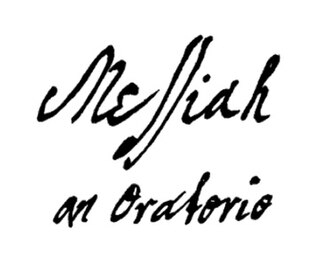
Messiah is an English-language oratorio composed in 1741 by George Frideric Handel. The text was compiled from the King James Bible and the Coverdale Psalter by Charles Jennens. It was first performed in Dublin on 13 April 1742 and received its London premiere nearly a year later. After an initially modest public reception, the oratorio gained in popularity, eventually becoming one of the best-known and most frequently performed choral works in Western music.
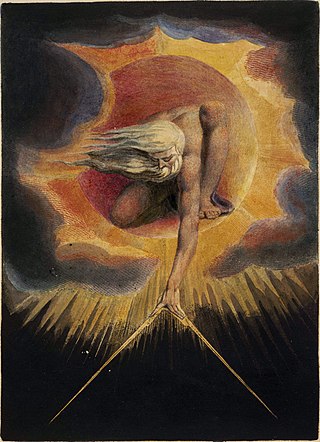
The Creation is an oratorio written in 1797 and 1798 by Joseph Haydn, and considered by many to be one of his masterpieces. The oratorio depicts and celebrates the creation of the world as narrated in the Book of Genesis.

Elijah, Op. 70, MWV A 25, is an oratorio by Felix Mendelssohn depicting events in the life of the Prophet Elijah as told in the books 1 Kings and 2 Kings of the Old Testament. It premiered on 26 August 1846.

Sir Charles Santley was an English opera and oratorio singer with a bravura technique who became the most eminent English baritone and male concert singer of the Victorian era. His has been called 'the longest, most distinguished and most versatile vocal career which history records.'

The Dream of Gerontius, Op. 38, is a work for voices and orchestra in two parts composed by Edward Elgar in 1900, to text from the poem by John Henry Newman. It relates the journey of a pious man's soul from his deathbed to his judgment before God and settling into Purgatory. Elgar disapproved of the use of the term "oratorio" for the work, though his wishes are not always followed. The piece is widely regarded as Elgar's finest choral work, and some consider it his masterpiece.

Tönet, ihr Pauken! Erschallet, Trompeten!, BWV 214, is a secular cantata by Johann Sebastian Bach, composed in 1733 for the birthday of Maria Josepha, Queen of Poland and Electress of Saxony. Classified in published editions as a dramma per musica, it is based on a libretto by an unknown author. The piece has the dedicatee addressed by allegorical figures representing Roman and Greek goddesses of war and peace. It is structured as nine movements, and scored for four vocal parts and a festive Baroque orchestra with trumpets, timpani, flutes, oboes and strings. Choral movements frame a series of alternating recitatives and arias. Bach led the first performance with the Collegium Musicum at the Zimmermannsches Caffeehaus on 8 December 1733.
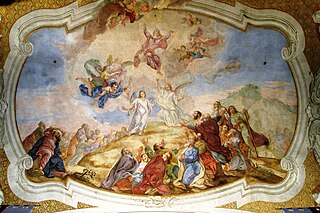
Lobet Gott in seinen Reichen, BWV 11, known as the Ascension Oratorio, is an oratorio by Johann Sebastian Bach, marked by him as Oratorium In Festo Ascensionis Xsti, composed for the service for Ascension and probably first performed on 15 May 1738.
Oedipus Tex is a satirical Western-themed oratorio by P. D. Q. Bach that follows the adventures of Oedipus Tex in Thebes Gulch. It was released on the album, Oedipus Tex and Other Choral Calamities in 1990.

Kenilworth, A Masque of the Days of Queen Elizabeth, is a cantata with music by Arthur Sullivan and words by Henry Fothergill Chorley that premiered at the Birmingham Festival on 8 September 1864.
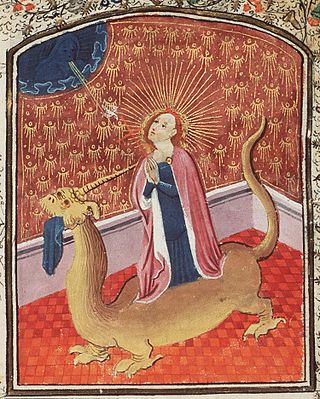
The Martyr of Antioch is a choral work described as a "Sacred Musical Drama" by the English composer Arthur Sullivan. It was first performed on 15 October 1880 at the triennial Leeds Music Festival, having been composed specifically for that event. Sullivan was musical director of the Leeds festival in 1880 and conducted the performance.

Joshua is an oratorio by George Frideric Handel. It was composed in a month, from 19 July 1747 to 19 August 1747, six months before the beginning of the oratorio season. Joshua is Handel's fourth oratorio based on a libretto by Thomas Morell. The oratorio premiered on 9 March 1748 at the Covent Garden Theatre, London. Joshua is based on the Biblical story of Joshua as the leader of the ancient Israelites. The story follows the Israelites from their passage over the Jordan River into Caanan and through the Battle of Jericho. The work also includes a love story elaborated from a few hints in the Biblical narrative between Caleb's daughter Achsah and Othniel, a young soldier.

Oedipus Tex and Other Choral Calamities was released in 1990 by Telarc Records. The album contains works by Peter Schickele under his alter-ego of P. D. Q. Bach and won a 1990 Grammy Award for 'Best Comedy Performance'.

Alexander's Feast is an ode with music by George Frideric Handel set to a libretto by Newburgh Hamilton. Hamilton adapted his libretto from John Dryden's ode Alexander's Feast, or the Power of Music (1697) which had been written to celebrate Saint Cecilia's Day. Jeremiah Clarke set the original ode to music.

An Occasional Oratorio is an oratorio by George Frideric Handel, based upon a libretto by Newburgh Hamilton after the poetry of John Milton and Edmund Spenser. The work was written in the midst of the Jacobite rising of 1745–1746, the attempt to overthrow Handel's patrons the Hanoverian monarchy under George II and replace them with a Stuart restoration under Charles Edward Stuart, "Bonnie Prince Charlie". The Occasional Oratorio is unique among Handel's works which he labelled "oratorio" in that it does not tell a story or contain elements of a drama, but was intended as a defiant and patriotic rallying piece.

The Crucifixion: A Meditation on the Sacred Passion of the Holy Redeemer is an oratorio for a SATB choir and organ composed by John Stainer in 1887, with text by W J Sparrow Simpson. The piece relates the Biblical narrative of the Passion and Crucifixion of Jesus. It is particularly noted for the Christian hymn, All for Jesus, All for Jesus.

The Light of the World is an oratorio composed in 1873 by Arthur Sullivan. Sullivan wrote the libretto with the assistance of George Grove, based on the New Testament. The work was inspired by William Holman Hunt's popular 1853–54 painting, The Light of the World. The story of the oratorio follows the whole life of Christ, told mostly in the first person, focusing on his deeds on Earth as preacher, healer and prophet.

Jesus Christus ist um unsrer Missetat willen verwundet is a St Mark Passion which originated in the early 18th century and is most often attributed to Reinhard Keiser. It may also have been composed by his father Gottfried or by Friedrich Nicolaus Bruhns. Johann Sebastian Bach produced three performance versions of the Passion, the last of which is a pasticcio with arias from George Frideric Handel's Brockes Passion. There are two other extant 18th-century versions of the Passion, both of them independent of Bach's versions. The Passion was performed in at least three cities in the first half of the 18th century: in Hamburg in 1707 and 1711, in Weimar around 1712, and in Leipzig in 1726 and around 1747.

Messiah, the English-language oratorio composed by George Frideric Handel in 1741, is structured in three parts. This listing covers Part III in a table and comments on individual movements, reflecting the relation of the musical setting to the text. Part I begins with the prophecy of the Messiah and his birth, shows the annunciation to the shepherds as a scene from the Gospel of Luke, and reflects the Messiah's deeds on Earth. Part II covers the Passion, death, resurrection, ascension, and the later spreading of the Gospel. Part III concentrates on Paul's teaching of the resurrection of the dead and Christ's glorification in heaven.
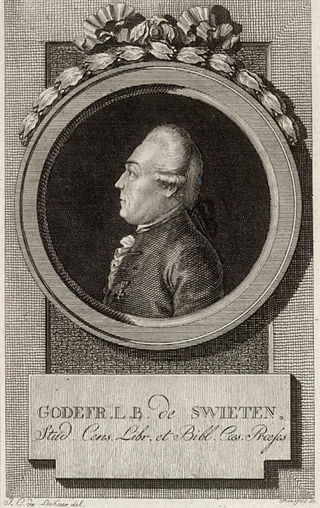
Der Messias, K. 572, is Wolfgang Amadeus Mozart's 1789 German-language version of Messiah, George Frideric Handel's 1741 oratorio. On the initiative of Gottfried van Swieten, Mozart adapted Handel's work for performances in Vienna.

Die Auferstehung und Himmelfahrt Jesu is an oratorio by Carl Philipp Emanuel Bach to a text by Karl Wilhelm Ramler on the subject of the resurrection and ascension of Jesus Christ. The first documented performance evidently took place in 1774, and was first publicly performed in 1778; it was further revised between 1778 and 1780. Along with the other oratorios that CPE Bach composed, Die Auferstehung und Himmelfahrt Jesu has been described as being "among the most important Protestant vocal works of the second half of the 18th century".



















